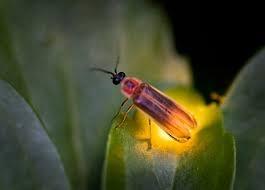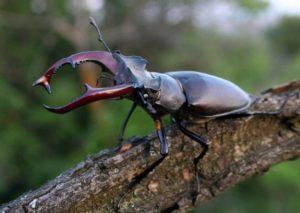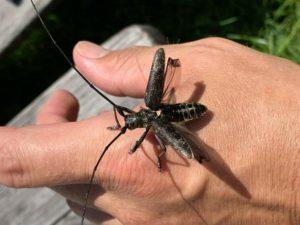Beetles: what are the types of these insects (photo with names)
Among a large number of insects, beetles or beetles are a separate order. They were named for the fact that the elytra are hard or leathery, modified. Among the large number of representatives there are very bright species, rare and harmful animals.
Content
What beetles look like: photo
General characteristics
Name: Beetles or Coleoptera
Latin: coleopteraClass: Insects - Insecta
 | Habitats: | everywhere except cold regions |
 | Dangerous for: | depending on the type |
 | Means of destruction: | folk, chemical, prevention |
Beetles are a detachment of insects with complete metamorphosis. Almost 3 tons of fossil species have been studied, but a large number are unexplored. They are distributed everywhere, in addition to the Antarctic, the Arctic and the highest mountains. But the most attractive specimens can be admired in the tropics.
beetle species
This order of insects is one of the most numerous.
Structure
The structure of all representatives of beetles is the same.
| Structure | Morphology |
| Body | Consists of three parts: head, chest and belly. |
| Head | Consists of the main capsule, antennae and mouth. It is divided into parts weakly, the neck, occiput and crown are not very noticeable. Sensory organs are also located: eyes, palps. The oral apparatus is gnawing. |
| Chest | Consists of three parts. The pronotum is often an indicator among beetle species. Elytra are located on the mesonotum, and wings are attached to the metanotum. |
| Limbs | All beetles have three pairs of limbs. They are in five parts. Depending on the type of beetle, they are slightly modified, because they can be designed not only for walking and running, but for digging or swimming. |
| Wings | The forewings are hard, like a shell, in some species modified and completely reduced. The wings are usually longer and wider than the elytra, but are hidden at rest. |
| Abdomen | It consists of several segments, which can be partially modified. At the end are retractable genitals. |
Sizes and shades
The sizes of representatives differ, and dramatically. The largest specimens reach a height of 17,1 cm, and according to unconfirmed information, one species, the titan lumberjack, has a length of 210 mm.
The smallest non-parasitic beetle is Scydosella musawasensis, a beetle found in South America. Its length is 0,352 mm. In Europe, the largest is stag beetle.
In terms of the number of shades and variety of patterns, beetles occupy one of the first places among insects. The coloring is amazing:
- all monophonic;
- metallic luster;
- drawings on separate parts;
- combinations of several shades;
- polished or rough surface;
- pigmentation.
Sexual dimorphism and polymorphism
Depending on the type of beetle, there are differences in the appearance of males and females. Moreover, there are differences both in terms of size and in terms of color. Some species have horns or tubercles that distinguish the male sex. The length of the mustache may also vary.
Polymorphism - several different forms of the same species appear in different families. It may depend on a sufficient amount of food base in the development process or on the place of residence.
Development and life cycle
Representatives of Coleoptera are dioecious oviparous. They go through 4 stages of development, rare species differ from these stages. Sometimes there are individuals with live birth.
Usually oval or round in shape, painted in light colors or translucent. They are laid out in protected places or specially prepared cavities. Depending on the species, they can be deposited in a bunch or singly.
They have only a few common characteristics: a sclerotized head, a fleshy body, and a gnawing mouthpart. There are individuals with short strong legs or a narrow body, capable of stretching. Some may even be predators.
Whitish, free, appear in the soil or place of development. During the transformation period, all organs appear.
It manifests itself in preparing a place for laying eggs and preparing food for future offspring. Many do not.
Animal behavior
Coleoptera have several behavioral features that are characteristic only of representatives of the species.
Acoustic ability
About 20 families among all representatives communicate using sounds. There is a special stridulation apparatus for this. The sounds are produced when the beetles move the mesothorax relative to the prothorax. With sounds:
- representatives of different sexes meet;
- repel predators;
- warn others of the threat.
bioluminescent glow

Fireflies.
Fireflies and click beetles are distinguished by their ability to glow in the dark. This is possible thanks to special light organs on the abdomen. In some sternites there are substances that oxidize and look bright.
It is also one of the ways of communication. This is how fireflies call females or males. And some do it as a mating signal, and some predators lure males into a trap and eat them.
Distribution and habitation
Beetles are found everywhere without exaggeration. Insects do not live only in the glacial parts of the Arctic and Antarctic, but there are species that in the north have adapted well to the way of life, sitting next to people. They live everywhere:
- in the upper layers of the soil;
- on the ground;
- on the grass;
- under the bark;
- in wood;
- on leaves;
- in flowers;
- in fruits;
- on the roots;
- in reservoirs;
- deserts and semi-deserts;
- anthills.
Protection Mechanisms
These insects have different versions of the mechanisms that are used for protection. Among them:
- Immobility. Many species pretend to be dead and fall motionless.
- playfulness. It is running, jumping, swimming or flying. Such species prefer to escape.
- Threatening. Some species assume intimidating postures and raise their mandibles to frighten the enemy.
- Noise. This method can serve both as a defense against enemies and as a warning to others.
- Shades. The color itself is often masking, which makes the animals inconspicuous.
Nutrition and natural enemies
Dietary preferences vary by species. Beetles eat almost any organic matter. There are lovers of plants, animal food, fungal spores, decomposed parts of wood and organic matter. But there are individuals that have a mixed type of nutrition.
Among the natural enemies of beetles there are a lot of different animal species - mammals, arthropods and parasitic riders. Most often, beetles are eaten:
- spiders;
- scorpions;
- centipedes;
- Mouse;
- rats;
- crows;
- magpies;
- mammals.
Many beetles become victims of humans. But most often they eat larvae, sometimes pupae.
The value of beetles in nature and for humans
A large number of animal species provides a very wide role in the ecosystem.
- Many beetles and their larvae are involved in soil formation and wood processing. Some of them utilize weakened tree samples, speeding up the decomposition process.
- Economic importance individuals are large. Many are helpful in the fight against pests and weeds. Some even introduce them on purpose.
- vermin Agriculture. There are a lot of these representatives. They infect herbs, trees, fruit, conifers, leaves and buds. They often eat stems and fruits.
- Neighbors of people. A number of species prefer to settle in the house of people. They can feed on leather, paper, groceries and dried fruits. Often affects wood.
- Human health. Many species secrete a protective mechanism in the form of geolymph. It on the human body can cause an abscess, burn or itching, possibly a disorder. There have been manifestations of allergies.
- cultural parts. Some people often encountered beetles in myths and symbols, some were attributed magical properties. They often met in the cinema and on the canvases of the classics.
- Collecting. Private collections can accrue several thousand individuals. They are selected by colors or types, I focus on aesthetics. There are also scientific ones, including for cabinets of curiosities.
Conclusion
Beetles are one of the brightest and largest families of insects. They are diverse, have their own species characteristics, preferences in nutrition and lifestyle.
Many of them are beautiful, but there are also inconspicuous examples. Some suffer from exposure to humans or other animals and become part of collections. But each of them is an important part of nature, with its own role.
Previous

